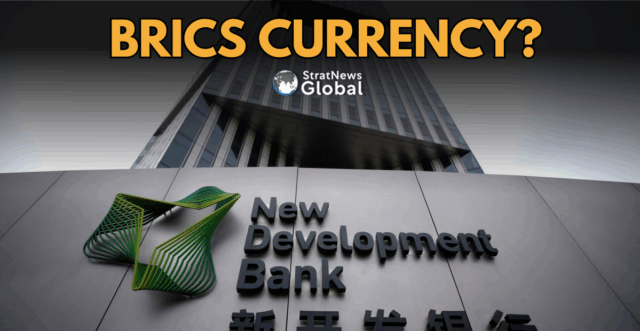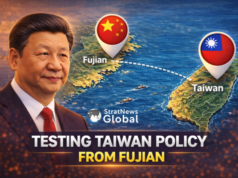Amid growing global debate on de-dollarisation, India has reiterated that the BRICS grouping was not formed to compete with other nations but to cooperate with other economies. This comes even as U.S. President Donald Trump continues to attack BRICS for its alleged push away from the dollar.
The expanded BRICS+ bloc now accounts for over 50% of global economic growth and nearly 40% of the world’s GDP, underscoring its growing influence in shaping a new international order. Yet, debt sustainability remains a key concern amid tariffs, trade barriers, and market volatility.
At an event titled “BRICS+ and the Global South: Shaping a New Architecture of Cooperation” hosted by Chintan Research Foundation, South Africa’s Acting High Commissioner Cedrick Crowley said, “Many African countries have borrowed in U.S. dollars or euros, subjecting them to a significant risk where their own currency fluctuates and depreciates. Hence, we hope to find acceptable mechanisms of financing in local currencies.”
Speaking to StratNewsGlobal, Purushendra Singh, Associate Director of CUTS International, said BRICS+ members were exploring ways to diversify trade settlements using a range of currencies. “To address such issues, BRICS+ countries are looking at diversifying currency exchange in some of the local currencies—namely from China, Russia, India and even Indonesia,” Singh said. However, some other peculiar additions to the list were—Petro yuan, cryptocurrency and even the weakening ‘yen’.
Singh added that while BRICS aims to strengthen South-South and Global South cooperation, “it also wants to focus on North-South and enhance trilateral cooperation. The African continent is a huge part of this, and so the Japan-India-Africa trilateral also has a role to play. The yen has also been used in the UN system for trade, and Japan has provided aid to Africa as well. This makes yen a potential currency for inter-BRICS trade transactions, despite Japan not formally part of BRICS+, but could be in future.”
He said discussions on the inclusion of digital currencies, blockchain technology and cryptocurrencies as possible dollar alternatives are ongoing.
Other initiatives are already in motion. The BRICS Pay system, launched at the 2024 Kazan Summit, provides an alternative mechanism for cross-border transactions in non-dollar currencies.
Looking ahead to India’s BRICS chairship next year, Sudhakar Dalela, Secretary (Economic Relations) at the Ministry of External Affairs, said reforming multilateral development banks and pushing for equitable trade rules will remain key priorities. “India will also focus on mutual investments, resilient and reliable supply chains, urgent resolution of conflicts that are impacting food, fertiliser and energy security, the protection of global commons, and a collaborative leveraging of technology for development,” Dalela said.
He added that the role of the New Development Bank as a source of sustainable finance will be central, alongside India’s continued focus on climate sustainability and strengthened partnerships.
Singh further noted that “joint cooperation on critical and emerging technology, dialogue on regulatory governance issues and joint shipping arrangements in a larger blue economy arrangement will also be in focus.” The blue economy—covering ocean-related commercial activity—contributes around 4% to India’s GDP.
According to Mongabay India, 95% of India’s trade moves by sea, and about 2.8 crore people are employed in fisheries, aquaculture and related sectors. Discussions on maritime trade under BRICS could therefore have significant long-term implications.
“Knowledge economy” and “tech-induced growth” will also be key drivers for the Global South’s strategic autonomy, as per the panel discussion. “A rules-based and inclusive BRICS+ ecosystem can serve as a stabilising force amid growing geopolitical fragmentation,” added former BRICS Sherpa Ambassador Sanjay Bhattacharya.





